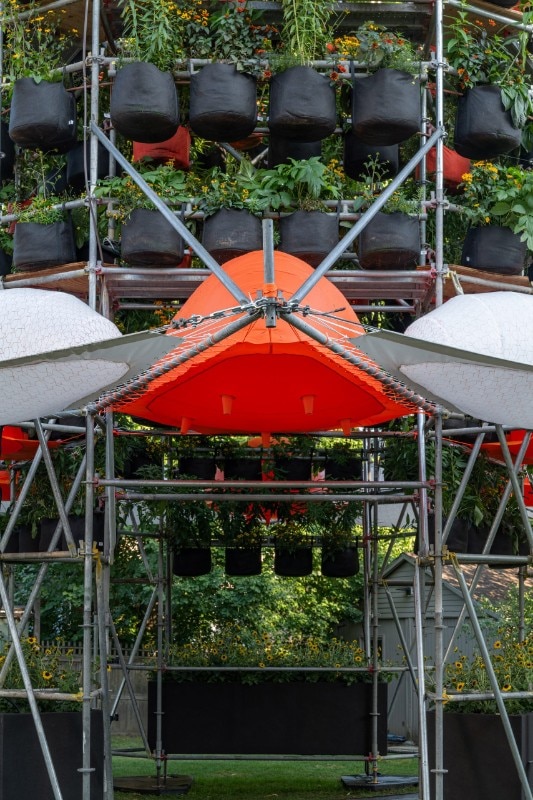A temporary mini-architecture has been installed on the campus of Harvard University, part of an academic initiative to demonstrate a “short-term strategy that instantly generates biodiversity and climate comfort.” Designed by Madrid-based firm Ecosistema Urbano, Polinature is a modular tower with inflatable tents and stacks of native plants, capable of mitigating the effects of climate change in urban areas.
Modular plant tower mitigates effects of climate crisis at Harvard
Madrid-based firm Ecosistema Urbano has installed inside the campus a modular tower as a device capable of instantly generating biodiversity and climate comfort.
PhotoEmilio P Doiztua
PhotoEmilio P Doiztua
PhotoEmilio P Doiztua
PhotoEmilio P Doiztua
PhotoEmilio P Doiztua
PhotoEmilio P Doiztua
PhotoEmilio P Doiztua
PhotoEmilio P Doiztua
PhotoEmilio P Doiztua
PhotoEmilio P Doiztua
PhotoEmilio P Doiztua
PhotoEmilio P Doiztua
PhotoEmilio P Doiztua
PhotoEmilio P Doiztua
PhotoEmilio P Doiztua
PhotoEmilio P Doiztua
PhotoEmilio P Doiztua
PhotoEmilio P Doiztua
PhotoEmilio P Doiztua
PhotoEmilio P Doiztua
PhotoEmilio P Doiztua
PhotoEmilio P Doiztua
PhotoEmilio P Doiztua
PhotoEmilio P Doiztua
PhotoEmilio P Doiztua
PhotoEmilio P Doiztua
View Article details
- Romina Totaro
- 18 October 2024
Designers Belinda Tato and Jose Luis Vallejo created a metal scaffolding, to which secondary elements and devices can be easily added as “plug-ins.” The whole thing is made reusable elements that are relatively easy to access, inexpensive, and simple to assemble or disassemble.
The structure was initially designed for communities affected by the “park equity gap”, that is the disparity in access to green spaces that disproportionately affects low-income communities and communities of color.
Polynature thus consists of three basic components: a scaffold, native plants, and awnings surrounding its base. The structure also contains a crown of solar panels that power it.

The scaffolding is combined to create a vertical tower, stabilized by counterweights and wires, and then wrapped with rows of native potted plants, which attract visits from local pollinators.
The lower canopy system, created by Rhode Island design firm Pneuhaus, provides shade, lighting and “climatic” comfort to visitors through an alternating pattern of white and orange “bubbles.” The white units are “permanently inflated” and contain LED lighting, while the orange ones intermittently emit a blast of cool air in response to sensors that measure “climatic discomfort.”